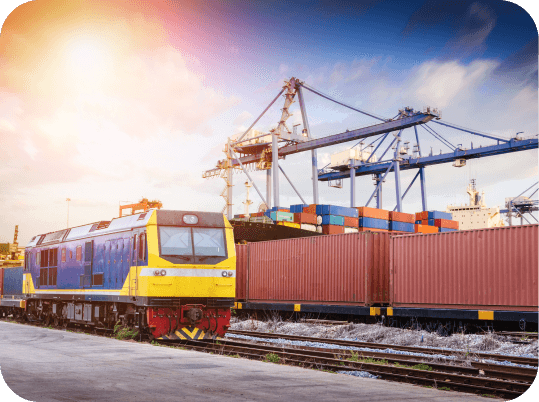More and more organizations are coming to understand that there are valuable insights hidden in the data which they generate during the course of their work that could transform their business operations. The science of data analysis is growing fast around the world, and it’s becoming more and more predictive in the way that it’s applied, with an emphasis on trying to plot new courses for businesses eager to grow and to change.
Every business operates differently and has different goals and insights to harness from its big data. But there are also many organizations which can serve as an inspiration; they have understood how big data applies to what they do and they have harnessed it to make changes.
Naturally, the first step is to organize your data gathering process. Collecting, storing and organizing the data that you need in a streamlined, sustainable manner is essential if you are ever to truly derive value from that data. From there, one starts to ask questions like ‘’what is the value of all this data? What should I be looking for?”
Types of business analytics
The business of data analysis has undergone fundamental transformation in the last few years to become the sophisticated science that it is today. In its earliest form data analysis was simply ‘descriptive’, which translated into simple summaries of a given set of data via reporting tools. The next stage in the evolution of data was ‘diagnostic’ analysis which meant that one could gain some understanding of the conditions that produced the data set via the process of evaluation.
From that point on, we moved into ‘predictive’ analysis where analysts began looking forwards and projecting into the future, using the data which had been produced to make predictions about future results. That stage then morphed into the era of ‘prescriptive’ analysis, which is the analytic technique that is dedicated to finding the best course of action for a given situation.
This arena of forward-looking analytics is proving to be extremely valuable for businesses and is having a major impact in the workplace. The next phase of the evolution is known as semantics, which is the art of trying to understand structure and meaning from a set of data, above and beyond what can be seen. Analysts will be using semantics to try and understand intentions, themes and hidden cause and effect within the data available.
So Big Data is evolving and can often seem daunting. If you are struggling to imagine how big data can work for you, then maybe a few examples of success stores can help you transform your thinking.
Big Data in action at top global firms
Let’s take a look at some inspirational uses of big data in the work environment at top global firms.
TESCO PLC: One of the biggest cost factors for the giant UK retailer is energy. It decided to proactively address the problem, and began by collecting over 70 million refrigerator-related data points coming off its operational units and feeding them into a dedicated data warehouse for analysis. Through the big data process, it was able to manage its energy cost more effectively, by “keeping better tabs on performance, gauging when the machines might need to be serviced and doing more proactive maintenance to cut down on energy costs.”
PREDPOL: When an analytics company developed an algorithm for the Los Angeles area that could predict earthquakes, they soon realized that they could tweak it in such a way that it would help predict criminal behavior. Using just three data points, “past type, place and time of crime and a unique algorithm based on criminal behavior patterns, PredPol’s powerful software provides each law enforcement agency with customized crime predictions for the places and times that crimes are most likely to occur.” The results were dramatic – there was a 20% drop in predicted crimes over the course of a single year. There was even one particular day in February 2014 where not a single crime was recorded – a record in an area like Los Angeles.
These are just a few examples of how effective data interpretation can lead to massive changes for an organization. The key concept here is ‘’actionable”. The insights gathered from the data must provide ideas that you can actually put into practice. That’s one of the great benefits of working with a company like CloudMoyo, a data analytics powerhouse that has provided valuable actionable plans for many companies.
RETAIL: Retail organizations generate massive amounts of data. Strangely enough, not many retail players are putting all this big data to its use. However, Microsoft Retail Stores did that and with their big data strategy, managed to take a refreshing approach in exploiting that data and deriving value from it. CloudMoyo is the partner for the retailer’s journey on retail advanced analytics & Machine Learning. In order to fully use all of their data, the Retail Chain decided to combine a lot of this data together among multiple databases and source systems. CloudMoyo developed a solution that helped in creating ad-hoc reporting on the data available from varied sources. This tailor-made and customer-centric approach from CloudMoyo enabled the Store chain to slice and dice business data from various sources, present information in easily consumable charts and dashboards, speedy decision-making and Ability to predict revenues of potential new stores. By using advanced algorithms that include query understanding and synonym mining, the company is able to glean user intent and produce better results as a result.
RAILROADS: In one such instance, CloudMoyo partnered with a North American railroad operator to improve its logistical efficiency. It has over 13000 freight cars, 1044 locomotives and their rail network comprises approximately 6,600 route miles that link commercial and industrial markets in the United States and Mexico. It has approx. 500 trains running per day with an average of 800+ crew members daily across 181 interchange points with other railroads. Add to this the complexities of repairs, recrews, allocations, scheduling, incidents, services, people & goods movement, vacations, communications and it turns out to be a heck of a day. Needless to say, it’s a massive transportation and logistics business with big data. To reduce downtime and inefficiency amongst the staff, CloudMoyo has worked with client’s business owners to develop a cloud-based data analytics system that utilizes the billions of rows of data generated by the railway signalling system about the movement of trains across the network. Client anticipates $2m of direct benefits from this project due to improved efficiency and preventive actions. In addition, indirect benefits of improving performance and capacity of the railway are estimated in hundreds of millions, with the economy benefiting from efficient and enhanced freight capacity.
Read more case studies about Big Data analytics here.
If you feel your company would benefit from Azure Assessment where CloudMoyo looks at your data structure and provides feedback and a roadmap for the way forward, then please click here and get in touch with us.














